I love wetlands. Yolo Bypass Wildlife Area, 25 square miles of wetlands, is particularly beautiful at this time of year: water everywhere; sun low in the sky; subtle play of light on clouds and water.

Yet Another Unitarian Universalist
A postmodern heretic's spiritual journey.
I love wetlands. Yolo Bypass Wildlife Area, 25 square miles of wetlands, is particularly beautiful at this time of year: water everywhere; sun low in the sky; subtle play of light on clouds and water.

More parody verses for “Old Time Religion”:
I will follow my Zen master,
Answer koans ever faster,
Sit in zazen ever after;
And that’s good enough for me!
It is plain that I should be Jain,
From ahimsa I shall refrain*
And allow no bugs to be slain;
And that’s good enough for me!
*Alternately: From meat-eating I shall refrain…
Back in 2006, when Wrigley bought out Altoids (R) brand mints, they replaced the peppermint oil with artificial flavor. Although they soon resumed using real peppermint oil, the mints have never been as strongly flavored as they once were. So here’s how to supercharge Altoids (R) so they taste as peppermint-y as they did prior to 2006:
Go to your local health food store, and get the peppermint spirits which are sold as a dietary supplement. I got “Herb Pharm” brand “Peppermint Spirits Essential Oil and Whole Leaf Extract”. Note that they have changed the label since I bought mine (a one ounce bottle lasts a long time), and the new label is different than the one you see in the photograph below. Now get a small dinner plate, and spread out the mints on it.
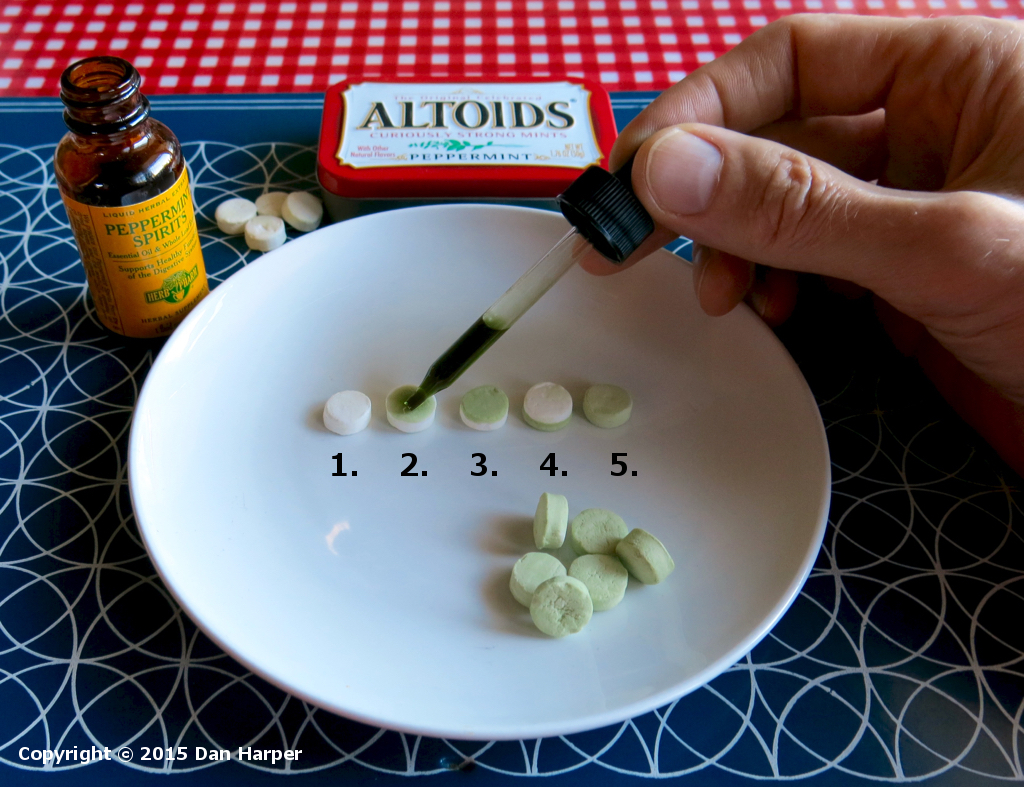
1. A mint ready for supercharging.
2. Adding peppermint spirits; the typical mint will absorb about three drops.
3. After adding peppermint spirits to one side, let the mint dry out (this could take 15 minutes).
4. A mint flipped over waiting for peppermint spirits to be added to the other side.
5. A supercharged mint drying out and waiting to be eaten.
Once you add peppermint spirits to both sides, the mints are somewhat damp and fragile, and it’s best to let them dry overnight before putting them back in the tin.
(If you want to know more about artificial flavor in Altoids, I wrote about it back in 2006 here, here, and here.)
Recently, I heard some new verses for the parody version of “Old Time Religion.” Here they are:
Yoruba religion, a.k.a. Orisha devotion:
Let us pray to the Orishas,
Not the ones who are too vicious,
Just the ones who grant our wishes;
And that’s good enough for me!
Ancient Egyptian religion:
O we sing the praise of Horus
Like the Dynasties before us —
A three thousand year old chorus;
And that’s good enough for me!
Worshiping at the altar of Wall Street:
The mighty Dollar is my Savior,
She controls my ev’ry behavior
Whether I spend her or I save her;
And that’s good enough for me!
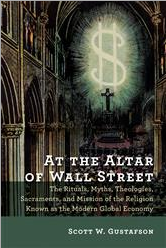 I was particularly interested in these verses because they happened to be about three religions I am currently studying. And lest you think I’m kidding about Wall Street being a religion, you might want to check out Scott Gustafson’s new book At the Altar of Wall Street: The Rituals, Myths, Theologies, Sacraments, and Mission of the Religion Known as the Modern Global Economy (Eerdmans Publishing, Sept., 2015), in which the author “argues that economics functions in our current global culture as religions have functioned in other cultures.”
I was particularly interested in these verses because they happened to be about three religions I am currently studying. And lest you think I’m kidding about Wall Street being a religion, you might want to check out Scott Gustafson’s new book At the Altar of Wall Street: The Rituals, Myths, Theologies, Sacraments, and Mission of the Religion Known as the Modern Global Economy (Eerdmans Publishing, Sept., 2015), in which the author “argues that economics functions in our current global culture as religions have functioned in other cultures.”
Isis is a well-known Egyptian goddess who needs little introduction. This beautiful little sculpture of Isis dates from a period when the Romans ruled Egypt; so Isis is wearing an Egyptian headdress, but she’s also wearing Roman clothing.
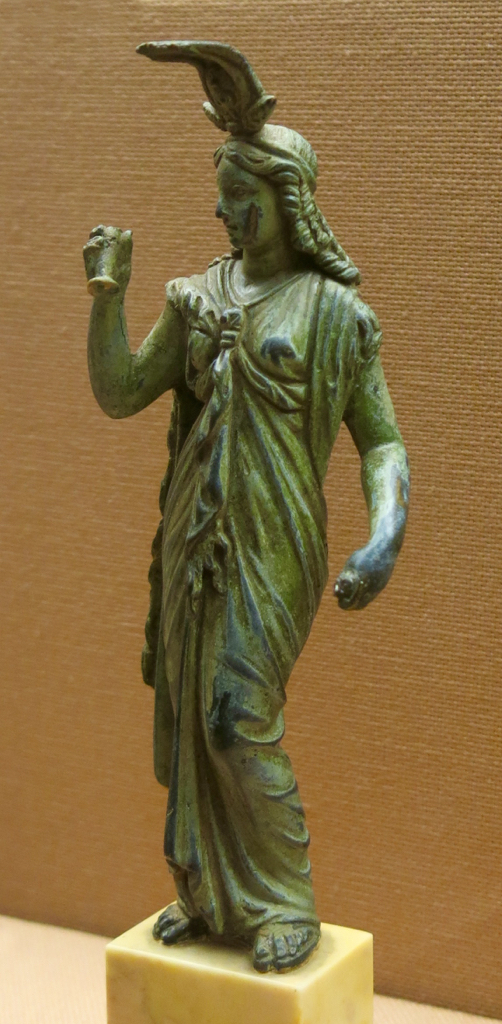
Above: Isis with sistrum, from Roman Imperial period, c. 100 BCE to 200 CE; bronze. Boston Museum of Fine Arts, accession no. 04.1713.
She is shaking a sistrum, an small percussion instrument that was used almost exclusively by women. Kara Cooney, a professor of Egyptian art and architecture, interprets the sistrum in terms of sexuality: “The sistrum was a kind of rattle — a wooden handle supporting bars of metal, each piercing small rings that clanged together when the instrument was vibrated. The sistrum itself represented human sexuality — round objects penetrated by a phallic rod holding them in place” (1). This interpretation could be accurate, but it could be overly influenced by Freud and Co., and therefore anachronistic.
The archaeologist Joyce Tyldesley offers another interpretation; she says the sistrum, which “was played only by women,” was “a rather large loop-shaped rattle with a long handle, often featuring the head of Hathor [another Egyptian goddess], which had initially represented the papyrus reeds of the Nile Delta where, mythology decreed, Hathor had been forced to hide with her young son. Eventually the sistrum lost all trace of its original meaning and instead started to serve as a religious symbol for life itself. It consequently become absorbed by other deities, and was particularly identified with the cult of Isis at the end of the Dynastic period.” (2) And this sculpture in fact does date from the end of the Dynastic period, the time when Isis had taken over the sistrum form Hathor.
Thus in this sculpture, we see the goddess Isis at the end of some three millennia of change and development. She is wearing the flowing robes of Rome rather than the simple sheath dress of Dynastic Egypt. She wears a headdress that identifies her as Isis, though it is not the older stepped headdress of Isis seen in sculptures from 500 years earlier (see, e.g., the sculpture of Isis below, from c. 685-525 BCE). And she has taken over the sistrum from Hathor and other goddesses.
Although their adherents may say otherwise, art and material culture does not show gods and goddesses as unchanging and fixed; instead, they grow and evolve over time.
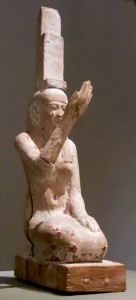
Above: Isis mourning Osiris, from Dynasty 26, c. 685-525 BCE; wood. Boston Museum of Fine Arts, accession no. 72.4172.
Notes:
(1) Kara Cooney, The Woman Who Would Be King (New York: Broadway Books, 2014), p. 39.
(2) Joyce Tyldesley, Daughters of Isis: Women of Ancient Egypt (London: Penguin, 1994), p. 139.
“…In large measure the race question involves the saving of black America’s body and white America’s soul.”
— James Weldon Johnson in his autobiography Along This Way, 1933. Although Johnson was discussing his work at the NAACP fighting lynching, in large part this observation still holds true today (and, by the way, provides a self-interested reason for some of us white people to be involved in anti-racism work).
Ed, whom we met through Sacred Harp singing, is a docent at Natural Bridges State Park, where migrating Monarch butterflies spend several months in the winter. Months ago he had offered to show us the Monarchs, and today we took him up on his offer.
Many of the Monarchs roost near the visitor center, down in a hollow where Blue Gum Eucalyptus trees grow. We walked into the grove at 11:40; the sun was well down into the hollow, and the temperature was rising into the mid-50s F. I looked up, and saw dozens of Monarchs soaring about twenty feet above me. Many more were roosting in the trees, and in the ivy growing up the trees.

Ed pointed out three large clusters of Monarchs, on three nearby Eucalyptus branches. He had a scope, which he focused on one of the clusters of Monarchs. The scope took in about half the cluster, and it was a spectacular sight: I counted well over a hundred butterflies roosting, all closely packed together. They were mostly showing the dull orange of the undersides of their wings, but every once in a while one would spread its wings, making a momentary spot of vivid bright orange.
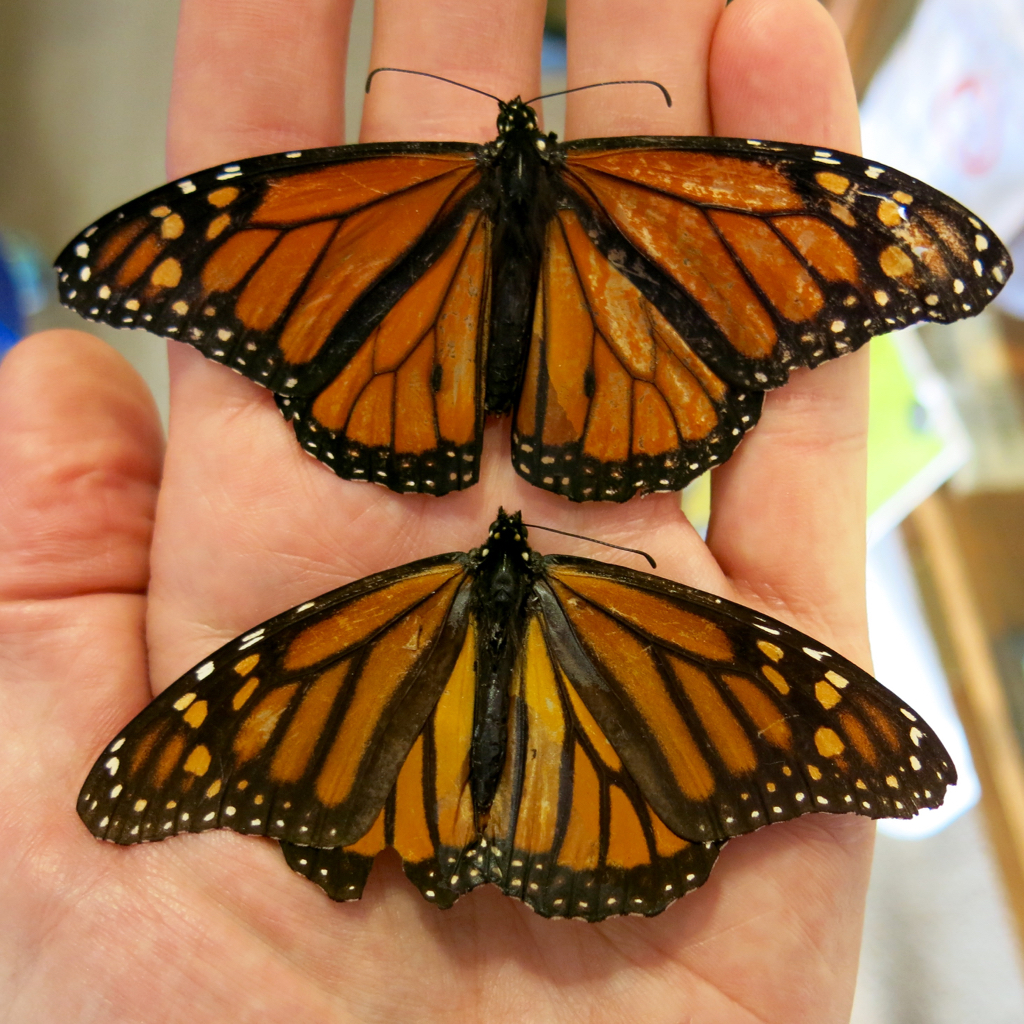
The park has a collection of dead Monarchs, and using two dead insects Ed showed us the difference in the wing patterns of the male and female Monarchs: males have a distinct black spot on each hindwing; females have heavier black veining on their wings.
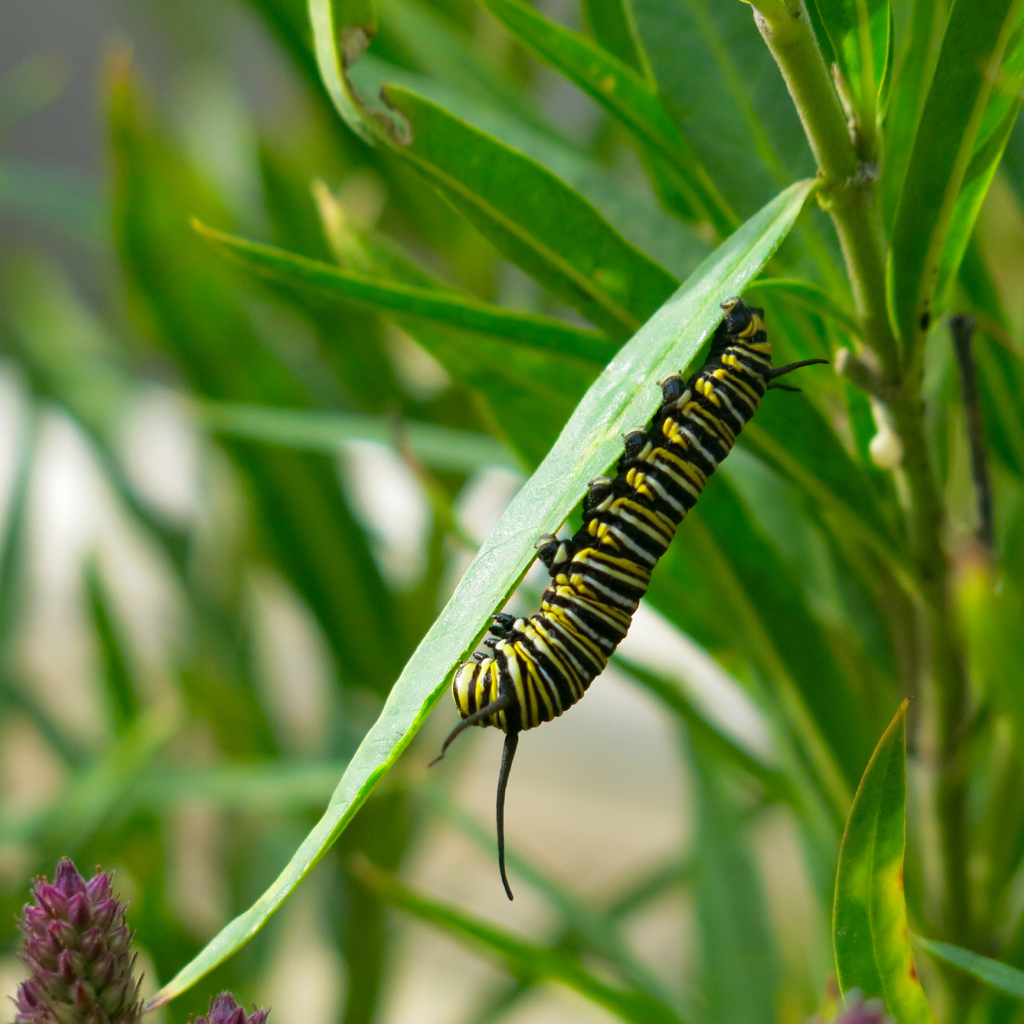
Near the visitor’s center, there’s a small butterfly garden, with two different species of milkweed growing. The caterpillars of Monarch butterflies will eat only milkweed. Sure enough, there were two caterpillars feeding on one of the milkweed plants.
It was a pretty fabulous way to spend a morning.
Info about visiting Natural Bridges State Park and the Monarchs here.
The New Horizons fly-by of Pluto is the best gift you could ever give to this science fiction fan. Like many science fiction fans, I’ve traveled to Pluto many times in stories like Heinlein’s Have Spacesuit, Will Travel, or Larry Niven’s World of Ptavvs (well, in that last book you don’t exactly travel to Pluto, you just watch it get blown up). After all those imaginary journeys to Pluto, seeing photos of the real planet is just about as good as it gets:
Lots more photos of Pluto on the official Web site of the New Horizon mission here.